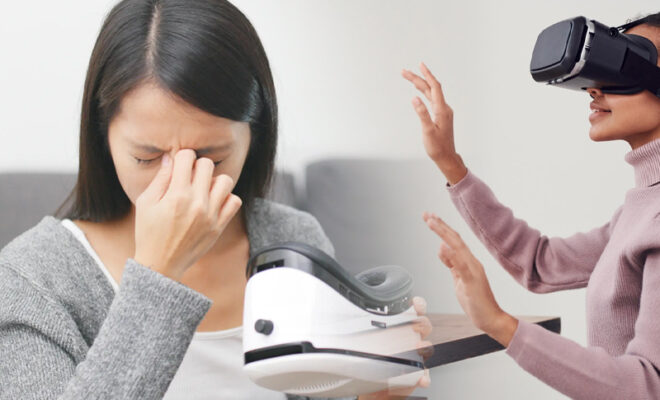Are VR Headsets Bad For Your Eyes, What Are The Side Effects?

These days people are spending too much time in the world. This will increase more with the emergence of the metaverse in the next few years.
Virtual reality (VR) headsets have become increasingly popular in various fields, including education, healthcare, and entertainment.
However, concerns have been raised about the potential negative impact of VR on human eyes.
While prolonged and excessive use of VR can lead to certain eye problems, when used correctly and in moderation, VR headsets are generally safe for the eyes.
VR use has been associated with eye strain, dry eyes, visually induced motion sickness, and heterophoria (misalignment of the eyes at rest).
These issues are more likely to occur with extended use and can worsen over time. However, they are treatable and can be prevented by following guidelines and taking breaks during VR sessions.
One of the main causes of eye strain in VR is the close proximity of the headset display to the eyes.
The immersive nature of VR requires a wide field of vision, often achieved by using a flat screen and distorting the image slightly.
This distortion can be challenging for the eyes to process, leading to eye strain. Manufacturers are continuously working on improving headset designs and lenses to reduce these effects.
Dry eyes are another common problem associated with VR use. The concentration required to make sense of the virtual environment can reduce blinking, leading to dryness.
To minimize this, users are advised to blink more frequently, take breaks, and use artificial tears if necessary.
It is important to note that there is currently no evidence to suggest that VR can cause permanent damage to the eyes or make a person blind. However, extended use of VR without proper precautions can result in temporary discomfort and vision issues.
Following the recommended guidelines, such as taking breaks every 30 minutes and wearing corrective eyewear if necessary, can help prevent eye strain and related problems.
On the positive side, VR technology is also being explored as a clinical tool for treating vision problems. It has shown potential in improving hand-eye coordination, visual focus, and treating conditions like strabismus, convergence insufficiency, and depth perception problems.
While excessive and prolonged use of VR headsets can lead to eye strain and related issues, these problems are generally temporary and can be prevented by following guidelines and taking breaks.
VR technology, when used responsibly and in moderation, can provide exciting and immersive experiences without causing long-term harm to human eyes.
If any lasting eye problems occur after using VR, it is recommended to consult with an eye doctor for further evaluation and treatment.



